Share
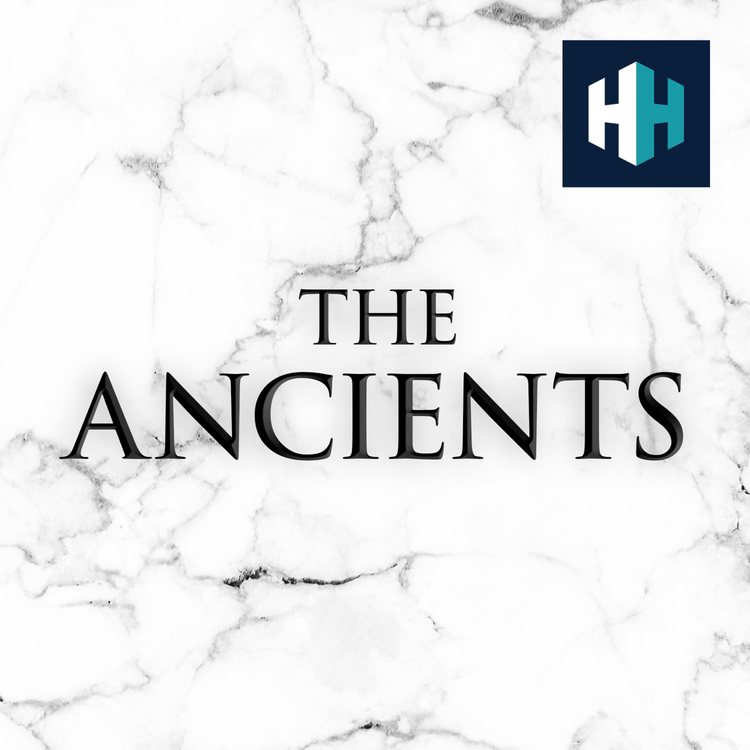
The Ancients
The Rise of Constantine
The Emperor Constantine I, better known as Constantine the Great, is one of the most significant emperors in Roman history. His later Christian biographers lauded him as an icon, the man who set in motion Rome's dramatic transformation into a primarily Christian empire. And yet Constantine's own beliefs were deliberately ambiguous, as Professor David Potter explained. He learned from Diocletian, he witnessed the mistakes and the successes. He figured out how to heal divisions in the empire, but at the same time restore it to one man rule through blood and battle.
Constantine's military and administrative successes are often-overlooked, but these in themselves were extraordinary. In this podcast David and I chatted through Constantine's remarkable life, his legacy and why you wouldn't rate your chances of survival if you were part of his family.
David is the author of 'Constantine the Emperor'.
Some notes from the pod:
Galerius - A Roman emperor between 305 and 311
(Valerius) Severus - Galerius' preferred candidate to become the new Augustus in the west in 306, following the death of Constantius (Constantine's father). He was opposed by Constantine.
The Wall - Hadrian's Wall
The Chi Rho - a Christian symbol, but also a symbol of good fortune. Constantine painted the symbol on his soldiers' shields at the Battle of the Milvian Bridge.
Lactantius - an early Christian author who talked about the Battle of the Milvian Bridge.
Maximinus Daia - ruled alongside Licinius in the east. Formed an alliance with Maxentius against Licinius and Constantine. Defeated by Licinius.
Licinius - ruler of the eastern part of the Roman Empire. Co-ruled the Empire with Constantine for a while (doesn't end well!).
More episodes
View all episodes

532. Rise of Humans
58:55||Ep. 532How did we go from ancient apes to the dominant species on Earth? The story of human evolution is one of survival, adaptation, and extinction - stretching back 7 million years.In this episode of The Ancients, Tristan Hughes is joined by Dr. Henry Gee to unravel the complex origins of humanity. From the first bipedal hominins to the evolutionary leaps that set Homo sapiens apart, together they explore why humans evolved from long-armed tree dwellers to upright walkers and discuss the the advantages that bipedalism gave our ancestors over other species.More from Henry Gee:The Origins of Life on Earth: https://open.spotify.com/episode/3Rb4OcjbmsjIHpFemJ7mmOFeathered Dinosaurs: https://open.spotify.com/episode/05wbG2dMp174D10gP30kIjMore on this topic:Homo Erectus: https://open.spotify.com/episode/3MjgWtiENDpVXc5qv77oTyHuman Evolution: Dragon Man: https://open.spotify.com/episode/128XsUffcThVirTghas7OAPresented by Tristan Hughes. Audio editor is Aidan Lonergan, the producer is Joseph Knight. The senior producer is Anne-Marie Luff.All music courtesy of Epidemic SoundsThe Ancients is a History Hit podcast.Sign up to History Hit for hundreds of hours of original documentaries, with a new release every week and ad-free podcasts. Sign up at https://www.historyhit.com/subscribe. You can take part in our listener survey here: https://insights.historyhit.com/history-hit-podcast-always-on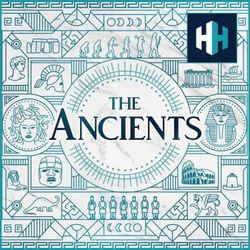
531. Herculaneum
01:03:59||Ep. 531In 79 AD, Mount Vesuvius unleashed devastation on the Roman world, burying entire towns beneath volcanic ash. While Pompeii is world-famous, another extraordinary site met the same fate - Herculaneum.In this episode of The Ancients, Tristan Hughes is joined by Professor Andrew Wallace-Hadrill to explore the incredible remains of this lesser-known Roman town. From lavish seaside villas and multi-story apartments to ancient fast-food stalls and bathhouses, Herculaneum offers an intimate glimpse into daily Roman life. Plus, we uncover the groundbreaking AI technology being used to decipher the carbonised scrolls found in its famed Villa of the Papyri.For more on this topic listen to our four-part series on Pompeii and Vesuvius:Pompeii: Life Before the Eruption: https://open.spotify.com/episode/3oIGA40brXolaPU9e3warcSex Work in Pompeii:https://open.spotify.com/episode/2k5CQDHXHmIRKCmu4kk9SBGladiators of Pompeii:https://open.spotify.com/episode/4c34S92PPQadej45S4F6cZPompeii: The Eruption of Vesuvius: https://open.spotify.com/episode/6IyQp6PYBrMwbFNWU33nqFPresented by Tristan Hughes. Audio editor is Aidan Lonergan, the producer is Joseph Knight. The senior producer is Anne-Marie Luff.All music courtesy of Epidemic SoundsThe Ancients is a History Hit podcast.Sign up to History Hit for hundreds of hours of original documentaries, with a new release every week and ad-free podcasts. Sign up at https://www.historyhit.com/subscribe. You can take part in our listener survey here: https://insights.historyhit.com/history-hit-podcast-always-on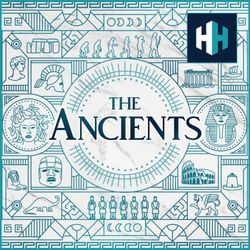
530. Prehistoric Nigeria: The Nok
54:14||Ep. 530In the heart of ancient Nigeria, a mysterious civilisation flourished - known today only through archaeology. The Nok Culture, symbolised by its striking terracotta figurines, remains one of Africa’s most fascinating yet overlooked ancient societies.In this episode of The Ancients, Tristan Hughes is joined by Dr. Kevin MacDonald to uncover the secrets of the Nok. Who were they? Where did they live? And what can their incredible artistry tell us about Iron Age West Africa? From groundbreaking archaeological discoveries to the enduring mystery of their decline, this is the story of one of Africa’s earliest known civilisations.For more on the ancient Iron Age world, our episode on the Birth of the Iron Age with Eric Cline can be found here: https://open.spotify.com/episode/6emHXY7Cv8xImTcVAi4mrfPresented by Tristan Hughes. Audio editor is Aidan Lonergan, the producer is Joseph Knight. The senior producer is Anne-Marie Luff.All music from Epidemic SoundsThe Ancients is a History Hit podcast.Sign up to History Hit for hundreds of hours of original documentaries, with a new release every week and ad-free podcasts. Sign up at https://www.historyhit.com/subscribe. You can take part in our listener survey here:https://uk.surveymonkey.com/r/6FFT7MK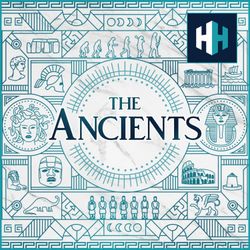
529. Jurassic America
43:13||Ep. 529Tristan Hughes explores Ancient America's true age; how 19th-century fossil discoveries across North America revealed a history far older than previously believed, challenging the notion that the Americas were a 'New World.'Tristan is joined by Professor Caroline Winterer as they discuss walking on 4 billion-year-old rocks in Eastern Canada, uncovering the first trilobites and the sensational dinosaur discoveries like the T-Rex and Brontosaurus that mesmerised the public and scientific community alike.More on:Ice Age America:https://open.spotify.com/episode/4KZruCMwpO7TakuiMs7DMp?si=2b1fdca8b18c4ef4The Ancient Amazon:https://open.spotify.com/episode/5YxnzfGa4x4Z8l4JE6Uwmh?si=0ec9d00afb0b476eTyrannosaurus Rex:https://open.spotify.com/episode/3uxH3HHjSuEk0mHmjFU9k7?si=1f57b9a555ac4bffPresented by Tristan Hughes. Audio editor is Aidan Lonergan, the producer is Joseph Knight. The senior producer is Anne-Marie Luff.The Ancients is a History Hit podcast.All music from Epidemic SoundsSign up to History Hit for hundreds of hours of original documentaries, with a new release every week and ad-free podcasts. Sign up at https://www.historyhit.com/subscribe. You can take part in our listener survey here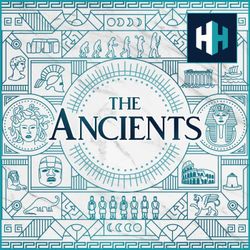
528. The Fall of Athens
57:17||Ep. 528In 404 BC, Athens faced total defeat. Once the dominant power of the Greek world, their navy was shattered, their food supply cut off, and on the horizon an armada of Spartan ships signalled the city’s final reckoning.In this episode of The Ancients, Tristan Hughes is joined by Professor Alastair Blanshard to explore the dramatic downfall of Athens in the final years of the Peloponnesian War. They discuss the decades-long struggle between Athens and Sparta, the key figures who shaped its outcome - like Lysander and Alcibiades - and how Persian support helped turn the tide. From epic battles to political intrigue, discover how this war reshaped the ancient Greek world for generations.Presented by Tristan Hughes. Audio editor is Aidan Lonergan, the producer is Joseph Knight. The senior producer is Anne-Marie Luff.The Ancients is a History Hit podcast.Enjoy unlimited access to award-winning original TV documentaries that are released weekly and AD-FREE podcasts. Sign up HERE for 50% off your first 3 months using code ‘ANCIENTS’. https://historyhit.com/subscriptionYou can take part in our listener survey here.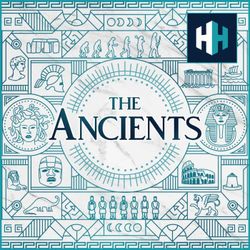
527. The Iliad
53:28||Ep. 527A story of war, honour, and destiny, The Iliad is one of the greatest epics in history. Written by Homer and featuring legendary figures like Achilles, Hector, and Agamemnon, it captures the drama and devastation of the final days of the Trojan War.In this episode of The Ancients, Tristan Hughes is joined by Professor Edith Hall to explore the origins, themes, and lasting influence of The Iliad. Together, they dive into the poem’s portrayal of fate and prophecy, its vivid depictions of gods and warriors, and the explosive conflict between Achilles and Hector. Edith also reveals how The Iliad’s language carries an apocalyptic tone - offering insight into how the poem was understood in the ancient world and why it still resonates today.Hear Professor Edith Hall on our Atlantis episode: https://shows.acast.com/the-ancients/episodes/atlantisPresented by Tristan Hughes. Audio editor is Aidan Lonergan, the producer is Joseph Knight. The senior producer is Anne-Marie Luff.All music courtesy of Epidemic SoundsThe Ancients is a History Hit podcast.Sign up to History Hit for hundreds of hours of original documentaries, with a new release every week and ad-free podcasts. Sign up at https://www.historyhit.com/subscribe. You can take part in our listener survey here: https://insights.historyhit.com/history-hit-podcast-always-on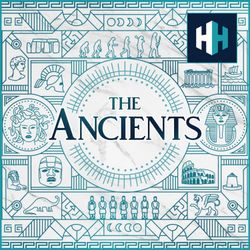
526. Rise of Julius Caesar
51:51||Ep. 526Julius Caesar is one of history’s most famous figures. But before his legendary conquests and romance with Cleopatra, how did he rise to power?In this episode of The Ancients, host Tristan Hughes is joined by Professor Catherine Steel to explore Caesar’s early life, political struggles, and key allies and rivals - from Marius and Sulla to Pompey and Crassus. Together Tristan and Catherine uncover the defining moments that shaped Rome’s most famous leader.Presented by Tristan Hughes. The producer and editor is Joseph Knight. The senior producer is Anne-Marie Luff.All music courtesy of Epidemic SoundsThe Ancients is a History Hit podcast.Listen to The Ancients episode; the Rise of Cicero: https://shows.acast.com/the-ancients/episodes/theriseofciceroSign up to History Hit for hundreds of hours of original documentaries, with a new release every week and ad-free podcasts. Sign up at https://www.historyhit.com/subscribe. You can take part in our listener survey here: https://insights.historyhit.com/history-hit-podcast-always-on
525. Wonders of the Ancient World
02:21:58||Ep. 525This month's exclusive subscriber-only episode takes in the most fascinating Wonders of the Ancient World. From the towering Colossus of Rhodes to the sunken city of Alexandria, Tristan Hughes uncovers the secrets behind these legendary sites.Presented by Tristan Hughes. Audio editor is Aidan Lonergan, the producer is Joseph Knight. The senior producer is Anne-Marie Luff.All music courtesy of Epidemic SoundsThe Ancients is a History Hit podcast.Sign up to History Hit for hundreds of hours of original documentaries, with a new release every week and ad-free podcasts. Sign up at https://www.historyhit.com/subscribe. You can take part in our listener survey here: https://insights.historyhit.com/history-hit-podcast-always-on
524. Obelisks
55:08||Ep. 524Ancient Egyptian obelisks stand as towering symbols of power and engineering brilliance, scattered across the world. But how were they built and what purpose did they serve?In this episode of The Ancients, Tristan Hughes is joined by Dr. Steven Snape and Professor Joyce Tyldesley to uncover the incredible story of Egypt’s obelisks. From their religious significance to the astonishing feats of engineering required to carve and transport these massive stone monoliths, discover how obelisks became some of the most iconic monuments of the ancient world and why so many ended up in cities across the western world, from Rome to New York.Presented by Tristan Hughes. Audio editor is Aidan Lonergan, the producer is Joseph Knight. The senior producer is Anne-Marie Luff.All music courtesy of Epidemic SoundsThe Ancients is a History Hit podcast.Sign up to History Hit for hundreds of hours of original documentaries, with a new release every week and ad-free podcasts. Sign up at https://www.historyhit.com/subscribe. You can take part in our listener survey here: https://insights.historyhit.com/history-hit-podcast-always-on